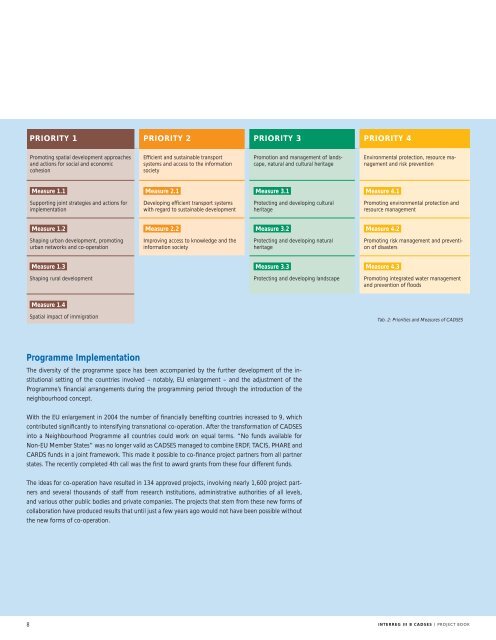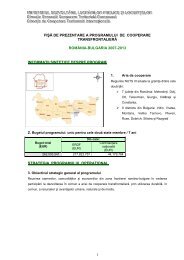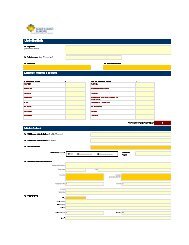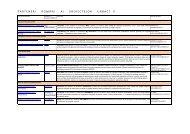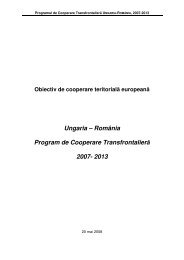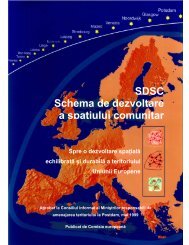INTERREG III B CADSES PROJECT BOOK - Infocooperare
INTERREG III B CADSES PROJECT BOOK - Infocooperare
INTERREG III B CADSES PROJECT BOOK - Infocooperare
You also want an ePaper? Increase the reach of your titles
YUMPU automatically turns print PDFs into web optimized ePapers that Google loves.
PRIORITY 1 PRIORITY 2 PRIORITY 3 PRIORITY 4Promoting spatial development approachesand actions for social and economiccohesionEfficient and sustainable transportsystems and access to the informationsocietyPromotion and management of landscape,natural and cultural heritageEnvironmental protection, resource managementand risk preventionMeasure 1.1Measure 2.1Measure 3.1Measure 4.1Supporting joint strategies and actions forimplementationDeveloping efficient transport systemswith regard to sustainable developmentProtecting and developing culturalheritagePromoting environmental protection andresource managementMeasure 1.2Measure 2.2Measure 3.2Measure 4.2Shaping urban development, promotingurban networks and co-operationImproving access to knowledge and theinformation societyProtecting and developing naturalheritagePromoting risk management and preventionof disastersMeasure 1.3Measure 3.3Measure 4.3Shaping rural developmentProtecting and developing landscapePromoting integrated water managementand prevention of floodsMeasure 1.4Spatial impact of immigrationTab. 2: Priorities and Measures of <strong>CADSES</strong>Programme ImplementationThe diversity of the programme space has been accompanied by the further development of the institutionalsetting of the countries involved – notably, EU enlargement – and the adjustment of theProgramme’s financial arrangements during the programming period through the introduction of theneighbourhood concept.With the EU enlargement in 2004 the number of financially benefiting countries increased to 9, whichcontributed significantly to intensifying transnational co-operation. After the transformation of <strong>CADSES</strong>into a Neighbourhood Programme all countries could work on equal terms. “No funds available forNon-EU Member States” was no longer valid as <strong>CADSES</strong> managed to combine ERDF, TACIS, PHARE andCARDS funds in a joint framework. This made it possible to co-finance project partners from all partnerstates. The recently completed 4th call was the first to award grants from these four different funds.The ideas for co-operation have resulted in 134 approved projects, involving nearly 1,600 project partnersand several thousands of staff from research institutions, administrative authorities of all levels,and various other public bodies and private companies. The projects that stem from these new forms ofcollaboration have produced results that until just a few years ago would not have been possible withoutthe new forms of co-operation.8 <strong>INTERREG</strong> <strong>III</strong> B <strong>CADSES</strong> / <strong>PROJECT</strong> <strong>BOOK</strong>


